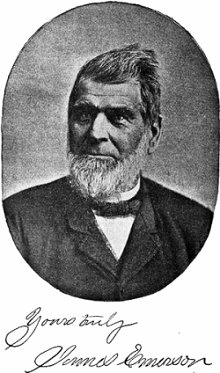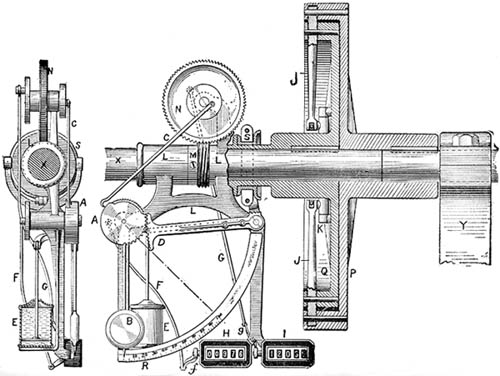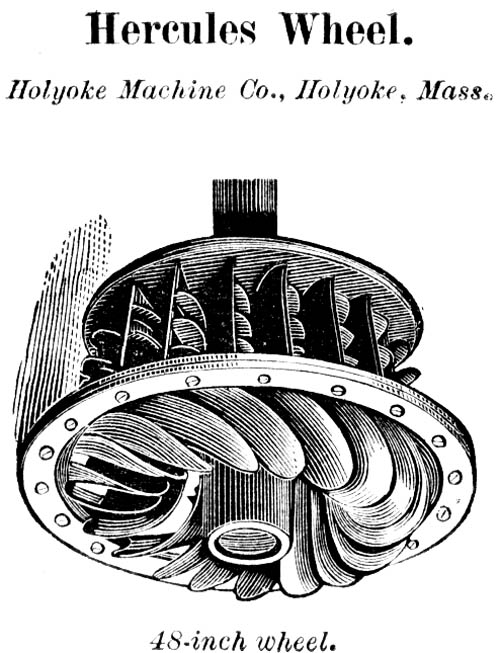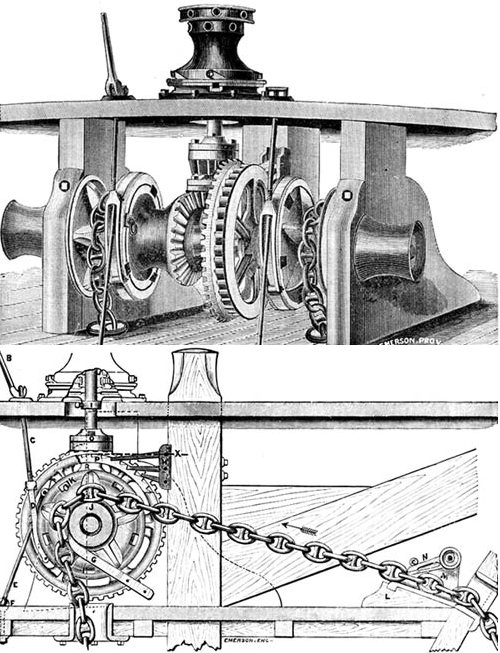James B. Emerson
Today, an iconoclast tests turbines. The University of Houston's College of Engineering presents this series about the machines that make our civilization run, and the people whose ingenuity created them.
After I'd finished a recent talk, a man came up and gave me the oddest book. On the spine it says Emerson's Hydrodynamics, etc. The etc. is what sets this book apart. As we first open it, our eyes are drawn to the glorious steel-plate engravings of all kinds of nineteenth-century hydraulic equipment.
Then, we look more closely. There's no narrative -- only a parade of random cuttings. This is not a book, it's a blog, published in 1892 -- a century before the Internet. And James Emerson is a man of powerful opinions. This is the fourth edition of an item that's already been popular for years.
 Emerson was a water turbine pioneer. America had taken the idea of the turbine from the French, and improved upon it. In 1870, Emerson had set up a remarkable new testing flume in Holyoke, Massachusetts. At that time, turbines wasted about a third of the energy in the water passing through them. When he'd finished, efficiencies were over ninety percent.
Emerson was a water turbine pioneer. America had taken the idea of the turbine from the French, and improved upon it. In 1870, Emerson had set up a remarkable new testing flume in Holyoke, Massachusetts. At that time, turbines wasted about a third of the energy in the water passing through them. When he'd finished, efficiencies were over ninety percent.
Emerson was a former sea captain and a prolific inventor -- justifiably proud of Yankee mechanical ability. American has, he tells us, finally created the perfect water turbine. But when we turn pages in this rag-bag summa theologica, what things we find! First item: a one-page description of the Holyoke Flume. Then a screed on the disregard of truth in the practice of law. And so on. Between his fine descriptions of machinery, Emerson pours venom upon three institutions: the law, academia, and religion. Religion, he will have us know, is antithetical to spiritual development and morality. Science is the enemy of invention, and law the enemy of truth.
His constant interruptions make it very hard to trace this definitive pictorial snapshot of late-19th-century hydropower. We read diatribes on the injustice of marriage and divorce for women, and a defense of nudity. He condemns Catholicism and Mohamadism, prohibition, lawyers and preachers -- even Newton's laws of motion.
He regards the metric system as academic folly, and he recom-mends dividing the foot into tenths, rather than inches. Fifty-nine years later, when I was working in the airplane industry, we followed a version of that advice. We did everything in inches and decimal fractions of inches. We abandoned the foot.
I have to admire Emerson's emphasis on the equality of women and the value of a mechanic's hands-on understanding. Yet the turbine had been the fruit of 18th-century mathematics, and theory would drive further development. Emerson was less a real agent of social change than someone preaching to people who already agreed with him.
But the engravings of machinery remain. Those glorious engines of America-emergent remind us that, after all our talk, technological change occurs in the tactile world around us.
I'm John Lienhard, at the University of Houston, where we're interested in the way inventive minds work.
J. Emerson, Treatise Relative to the Testing of Water-Wheels and Machinery, also of Inventions, Studies, and Experiments, with Suggestions from a Life's Experience. 4th ed. (Willimansett, MA: 1878/1892). I am most grateful to Marc B. Edwards for providing me with this very interesting book.
E. T. Layton, Jr. Scientific Technology, 1845-1900: The Hydraulic Trubine and the Origins of American Industrial Research. Technology and Culture,January 1979, Vol. 20, No. 1, pp. 64-89.
For more on the Holyoke Flume and Emerson's role in it see:http://www.holyokemass.com/pichampden/p144.html

Emerson's scale for measuring power.

The "Hercules" version of a Francis mixed-flow turbine blade.

Emerson's design of a ship's windlass.
 Click on the thumbnail to the right for one sample of Emerson's many interspersed commentaries on religion.
Click on the thumbnail to the right for one sample of Emerson's many interspersed commentaries on religion.